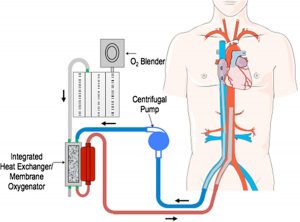Chances are you answered yes because Alzheimer’s is currently the sixth largest cause of death in the United States, and it continues to rise. Between 2000-2017, Alzheimer’s has increased by 145% and now affects about 5.8 million people in USA. Alzheimer’s is a degenerative brain disease that has no cure. It often starts with loss of memory and can lead to loss of communication and even death. Such individuals can require specialized care in later stages, which can put pressure on medical systems and family. Most people see symptoms after their 65thbirthday. It is generally accepted that amyloid plaques (protein fragments that get stuck in the brain) are somehow linked to Alzheimer’s, but the exact relationship is not known. A recent study from MIT suggests brain waves could be used to get rid of such plaques and help improve memory.
Gamma Way Treatments May Be Key to Fighting Alzheimer’s
Researchers at MIT, led by senior author Li-Huei Tsai, exposed a group of mice to gamma brain waves and stimulating sounds. The brain is made up of many types of neurons, which are specialized cells, that must communicate with each other. They do this through electrical signals, and if these signals cycle about 25-80 times per second they are labelled as gamma waves. Gamma waves are thought to play an important role in memory and cognition and previous research has shown they may play a role in reducing brain amyloids.

Courtesy: Pexels | Photo Credit: Pixabay | A researcher peers into a microscope.
The MIT researchers had previously performed similar experiments with only audio or only gamma ray stimulation. Both of these experiments had shown positive results for mice memory. The mice were better able to navigate mazes and identify objects. The decided to build on those previous projects by subjecting the mice to both types of treatments. The results were resoundingly positive and resulted in a “… very dramatic reduction of amyloid,” explained Dr. Tsai. Mice were once again better able to remember and navigate mazes and recognize objects. However, even though initial results are promising, more research needs to be done to determine whether this treatment is safe and effective for humans. Also, the mice stopped showing improvement if the treatments were stopped for a week, meaning treatment may have to be recurring to provide any benefit.
Caring for Those with Alzheimer’s Is Not Easy

Courtesy: Pexels | Photo Credit: Matthias Zomer | People with Alzheimer’s need specialized care and support.
Caring for people with Alzheimer’s is no small task. Not only does it require immense resources and specialized care, but it can also weigh on family members and caregivers. In 2018 alone, $277 billion US dollars were spent on Alzheimer’s care, and this number is expected to grow as the population ages. Currently, a number for prescription drugs exist to slow down the disease in its early stages but there is no definite treatment. This research could lead the way for one of the first treatments that could actually reverse the effects of this disease. About 95% of Alzheimer’s affects those above 65, which means younger generations may still be able to reap the rewards of continued research in this field.
-Sukhman Bhuller




